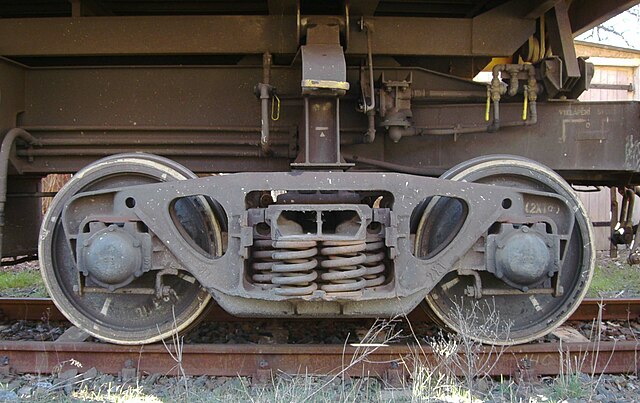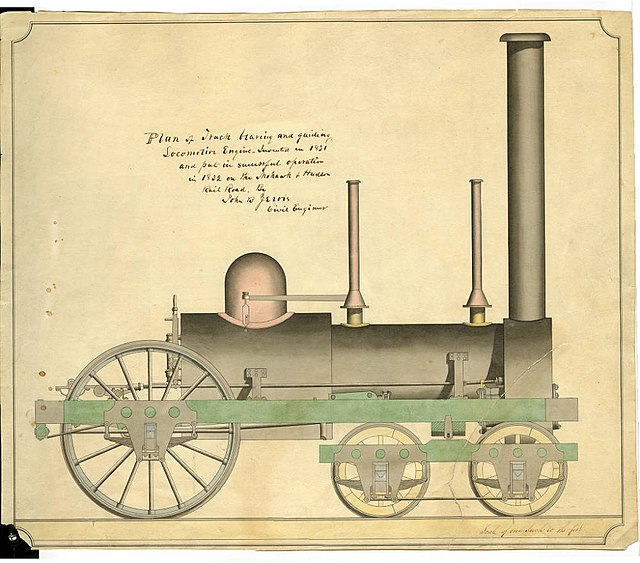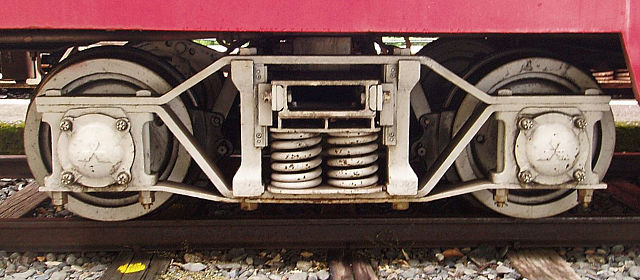Trams have been used since the 19th century, and since then, there have been various uses and designs for trams around the world. This article covers the many design types, most notably the articulated, double-decker, drop-centre, low-floor, single ended, double-ended, rubber -tired, and tram-train; and the various uses of trams, both historical and current, most notably cargo trams, a dog car, hearse tram, maintenance trams, a mobile library service, a nursery tram, a restaurant tram, a tourist tram, and as mobile offices.
Articulated trams are made up of multiple body sections, connected by flexible joints, as seen in Toronto.
Hong Kong Tramways fleet is entirely made up of double-decker trams.
The low-floor Škoda 15 T use a pivoting bogie in order to help the tram pivot on curved tracks.
Single-ended tram
A bogie is a chassis or framework that carries a wheelset, attached to a vehicle—a modular subassembly of wheels and axles. Bogies take various forms in various modes of transport. A bogie may remain normally attached or be quickly detachable. It may include a suspension component within it, or be solid and in turn be suspended ; it may be mounted on a swivel, as traditionally on a railway carriage or locomotive, additionally jointed and sprung, or held in place by other means.
A railway bogie
Experiment, the first successful American locomotive with a bogie, built in 1831 to a design by civil engineer John B. Jervis
Japanese archbar bogie with axleboxes
Diamond frame bogie, elliptical springs and American style journal boxes








